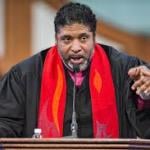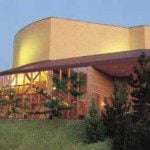UAP and Ancient Alien Theology, UFO 21

Why are we asking about Ancient Alien Theology? Here’s my answer: because we’re making an inventory of ontologies to explain the UFO phenomenon, and our ancient alien theorists seem to presuppose one.
You may object: But ancient astronaut theory has no theology! If anything, ancient astronaut theory eliminates theology and replaces it with technology?
Well, that’s right. But this anti-theology is what I call “Ancient Alien Theology.” Ancient Alien Theology takes archaic symbols and strips them of their religious reference. So, this anti-theology is actually theology in reverse, so to speak. If I confuse you, please read on anyway.
The Roots of Ancient Alien Theology

The idea that our planet Earth has been visited by extraterrestrial tourists has been around for a while. Even American fiction author Jack London wrote a short story about a UFO landing in a primitive setting, The Red One. That was 1917. But the current version of ancient astronaut theory begins about 1970. Perhaps it was Barry Downing’s The Bible and Flying Saucers, a serious demythologizing of the Bible, that lit the fire cracker in 1970 (Downing, 1970). What Downing did for the Bible, Eric von Däniken did for the world’s archaic religions with his book bomb of 1968/1972, Chariots of the Gods? (Däniken, 1972).[1] Then, Zecharia Sitchen’s The 12th Planet plus the volumes that followed exploded with a new interpretation of civilization, a revisionist history beginning with extraterrestrial visitors – the Anunnaki — during the Sumerian epoch.[2]
In short, according to the Ancient Aliens television series, “We are not alone. We’ve never been alone.”
Are UFOs really God’s Chariots?
Since 2010, the History Channel has hosted a widely watched video series, Ancient Aliens, complete with stars familiar to us. The show’s thesis is this: Earth, has been visited in the past by extraterrestrial creatures more advanced than we in science and technology. According to so-called “ancient astronaut theorists,” extraterrestrials came to Earth and found here our ancestors, either primates or early hominids. Extraterrestrial engineering augmented the know-how of our primitive ancestors. And this accounts for the Egyptian pyramids, the architecture of the Incas and Aztecs, the placement of statues on Easter Island, Stonehenge, and numerous other ancient wonders. In addition to presenting this desultory survey, ancient astronaut theorists claim alien scientists modified the DNA of our ancestors. This genetic intervention gave a jump start to the evolution of Homo sapiens. We human beings now benefit from alien DNA in our genome (Peters, 2014, pp. 144-145).
Accounts of this alleged dramatic visitation can be found in the petroglyphs and scriptures of ancient peoples such as those in Sumer, Egypt, and Israel. If when reading the Bible, we replace reference to God or the gods with reference to aliens in spacecraft, we will see that it all fits together. Gods and ET are the same. Or, alternatively, between the inexpressible divine and us is a layer of extraterrestrials. Thus, sayeth, ancient alien theologians.

Here’s a biblical example of Ancient Alien Theology at work. Ancient astronaut theorist Scott Alan Roberts re-interprets the Adam and Eve story in Genesis to show how the evolution of the human race was jump-started by an alien. Earth’s evolution was moving too slowly. So an ancient astronaut inserted some extraterrestrial DNA. According to Roberts, the serpent in the Garden of Eden was actually a reptilian alien. Eve engaged in sexual intercourse with both the serpent and with Adam, giving birth to two boys, Cain and Abel. Abel was Adam’s progeny. Cain was the hybrid. Cain killed Abel. This meant Cain’s genes would survive and provide a DNA boost to the rest of humanity, expanding the genetic distance between primates and humans. “So let’s engage in a little gap-filling exercise of our own; the so-called missing link may very well have been DNA provided by visitors from another world” (Roberts, 2012, p. 156).
As an aside, established scientists and respected theologians would think this is all rubbish. Nevertheless, a growing popular view of science includes a tenet that archaeological and textual evidence support the ancient alien hypothesis. Science is being asked now to slake our ontological thirst, to determine our essence by finding our origin.[3]
How does Ancient Alien Theology shake out? Philip Coppens summarizes it.
“It is clear that civilization was indeed guided by gods, by a nonhuman extraterrestrial intelligence. Though today we would consider this to be the bailiwick of religion, it is not; it is about directly experiencing another reality and contacting this intelligence” (Coppens, 2012, p. 288).
Even though it may appear that science is replacing religion; it is more accurate to say that science is a re-expression of religion in secular guise. Science has become the modern religion (Peters, 2014, p. 146). Ancient Alien Theology is but a sect within the science-as-religion tradition.
A Theological Interpretation of Ancient Alien Theology

Our modern era commingles science and religion like oil and water. We frequently see them together. But they don’t blend. Ufologist Brenda Denzler perceives this cultural tension at work in our attempts to interpret UAP. Occasionally this tension leads to a scientific or pseudo-scientific treatment of religion as if religion itself did not exist.
“…religion and ufology have been intertwined, because religious motives have so often been imputed to UFO witnesses, UFO investigators, and those who believe them. Yet although many in the UFO community struggled with mainstream science, they nevertheless tended (or intended) to use a scientific framework for understanding UFO phenomena. There was almost no room in the organized study of aerial anomalies for religion…” (Denzler 2001, Kindle 1587-1589).
Like Denzler, I suggest that a double mind is at work in our culture. On the one hand, we want to believe our ancient traditions, such as the biblical account of our origin. On the other hand, we want to dismiss ancient sacred literature because it’s pre-modern, pre-scientific, out-of-date. Can we have both? Yes. One way is to adopt the ancient astronaut theory about the origin of the human race and the origin of our belief in the heavenly gods.
At a more subtle level, Ancient Alien Theology leads us to worship science, not the extraterrestrial angels bringing us science. Science–whether terrestrial or extraterrestrial–is responsible for making us who we are. And, if there is any hope of redemption, it will come from scientists either on our planet or another planet (Peters, 2014, p. 144).
Conclusion

In the first edition of my book, UFOs—God’s Chariots?, I took the time to refute the prosaically scientific and technological interpretations ancient astronaut theorists applied to the Bible, the building of Egyptian pyramids, the Plain of Nasca drawings, Easter Island’s statues, and such. In the revised edition of 2014, I gave relatively more attention to the theological meaning of the anti-theological theology at work. Why would one want to eliminate ancient myths of the gods and substitute a new myth about the providential care of modern science and technology?
In sum, I cannot list Ancient Astronaut Theology among the viable ontologies we should seriously consider as explanatory of UAP. Ancient astronaut theorists are confusing. They rely on a theory that attempts to interpret multivocal religious symbols and myths within the univocal conceptuality of science and technology. And in doing so, this theory attempts to cash in on cultural enthusiasm for knowledge about life on exoplanets. Believing in Ancient Astronaut Theology is like purchasing a new Tesla and then removing its four tires. It’s fancy. But it’ll get you nowhere.
Patheos SR 1191 UFO 21 UAP and Ancient Alien Theology
SR 1186 UFO 16 UAP Cryptoterrestrial Hypothesis
SR 1187 UFO 17 Scientizing Ufology
SR 1188 UFO 18 Are UAP from outer space?
SR 1189 UFO 19 Are UAP from future time?
SR 1190 UFO 20 Are UAP from another dimension?
Ancient Alien Alternative History
SR 1191 UFO 21 UAP and Ancient Alien Theology
SR 1192 UFO 22 UAP, ETI, and David Bohm’s Physics
SR 1194 UFO 24. A UFO for Christmas?
SR 1195, UFO 25. UAP in the Nation of Islam?
▓

Ted Peters directs traffic at the intersection of science, religion, and ethics. Peters is an emeritus professor at the Graduate Theological Union, where he co-edits the journal, Theology and Science, with Robert John Russell on behalf of the Center for Theology and the Natural Sciences, in Berkeley, California, USA. He authored Playing God? Genetic Determinism and Human Freedom? (Routledge, 2nd ed., 2002) as well as Science, Theology, and Ethics (Ashgate 2003). Along with Martinez Hewlett, Joshua Moritz, and Robert John Russell, he co-edited, Astrotheology: Science and Theology Meet Extraterrestrial Intelligence (2018). Along with Octavio Chon Torres, Joseph Seckbach, and Russell Gordon, he co-edited, Astrobiology: Science, Ethics, and Public Policy (Scrivener 2021). Along with Arvin Gouw and Brian Patrick Green, he co-edited Religious Transhumanism and Its Critics (Lexington 2022). Look for his newest book, The Voice of Public Theology, a collection of previous articles. See his website: TedsTimelyTake.com.
Regarding UFOs, he is author of UFOs: God’s Chariots? Spirituality, Ancient Aliens, and Religious Yearnings in the Age of Extraterrestrials (Career Press New Page Books, 2014). He served as Louisiana State Director for MUON and is currently a member of two UFO investigation organizations, Society for UAP Studies and Scientific Coalition for UAP Studies.
▓
Notes
[1] Despite its language of science and technology, Ancient Alien Theology cannot pass the academic smell test. At least according to skeptic Craig Foster. “Historians have developed an understanding of ancient history based on centuries of extensive, careful research. Ancient alien enthusiasts show no appreciation for this evidence. Instead, they mislead the public by presenting fraudulent, mistaken, or creative interpretations of hand-picked historical events while omitting evidence to the contrary” (Foster 2024, 30-31). Foster also objects to Ancient Alien Theology because it’s allegedly racist. It presupposes our terrestrial ancestors were too stupid to construct the marvels of the archaic world. Egyptians allegedly lacked the science and technology to build pyramids. So they needed the help of extraterrestrial engineers (Foster, 2024, 31).[2] “Sitchin’s ideas have been resoundingly rejected by scientists, academics, historians (including Sumerologists, Orientalists and Assyriologists) and anthropologists who dismiss his work as pseudoscience and pseudohistory.” Thus speaketh Wikipedia.
[3] James Ernest Brown, J.J. Hurtak, and Desiree Hurtak marvel at the engineering of our Egyptian ancestors. These three scholars credit the early Egyptians, to be sure; even though they may have been helped either by extraterrestrials or by the engineers at Atlantis. The Great Pyramid at Giza, for example, was much more than a tombstone. It was also a hydrology plant. “The Great Pyramid had a dual use purpose, where initiations, other rituals, and ceremonies could have taken place within the various temples of Egypt also incorporating the power of water. Currently, water, now popularly called structured water, or Earthmilk, is being investigated for its many beneficial purposes. We believe this was equally important to the ancient Egyptians and a source of their longevity and a demonstration of their Wisdom” (Brown, Hurtak, & Hurtak, 2019, p. 319).
References
Brown, J. E., Hurtak, J. J., & Hurtak, D. (2019). Giza’s Industrial Complex: Ancient Egypt’s Electrical Power and Gas Generating Systems. Los Gatos CA: Academy for Future Science.
Coppens, P. (2012). The Ancient Alien Question. Pompton Plains NJ: New Page Books.
Däniken, E. v. (1972). Chariots of the Gods? (1st ed.). New York: Bantam.
Denzler, B. (2001). Lure if the Edge: Scientific Passions, Religious Beliefs, and the Pursuit of UFOs . Berkeley CA: University of California Press.
Downing, B. (1970). The Bible and Flying Sauceers (1st ed.). New York: Avon.
Foster, Craig A. (2024), “Ancient Aliens, Now Extra Cringey,” Skeptical Inquirer 48:5 (September/October) 30-31.
Peters, T. (2014). UFOs–God’s Chariots? Pompton Plains NJ: New Page Books.
Roberts, S. A. (2012). Race Interrupted: Ancient Aliens and the Evolution of Humanity. In M. P. Dalley (Ed.), Lost Civilizations and Secrets of the Past (pp. 150-170). Pompton Plains NJ: New Page Books.
Sitchen, Z. (1976). The 12th Planet. New York: Stein and Day.














